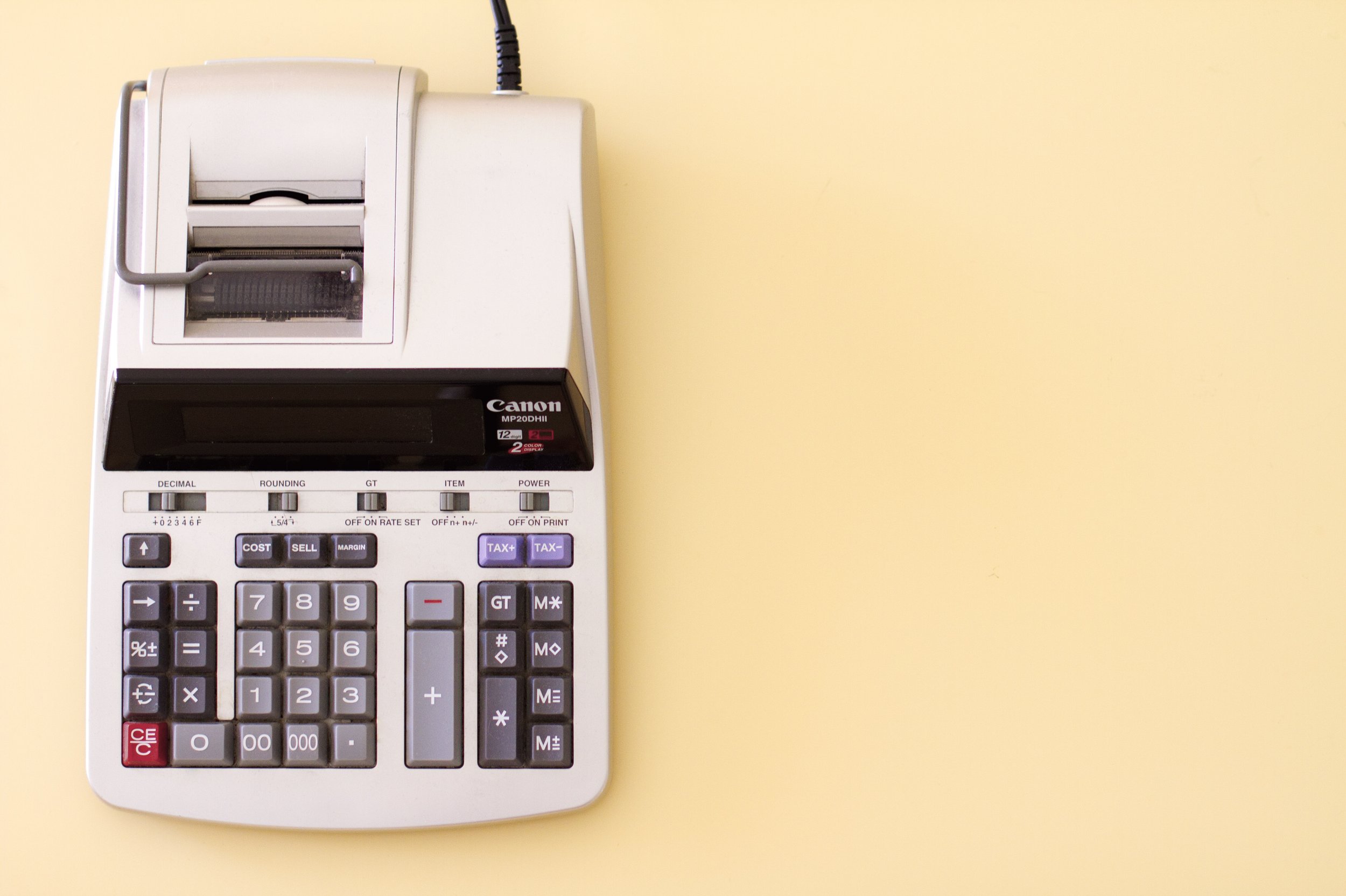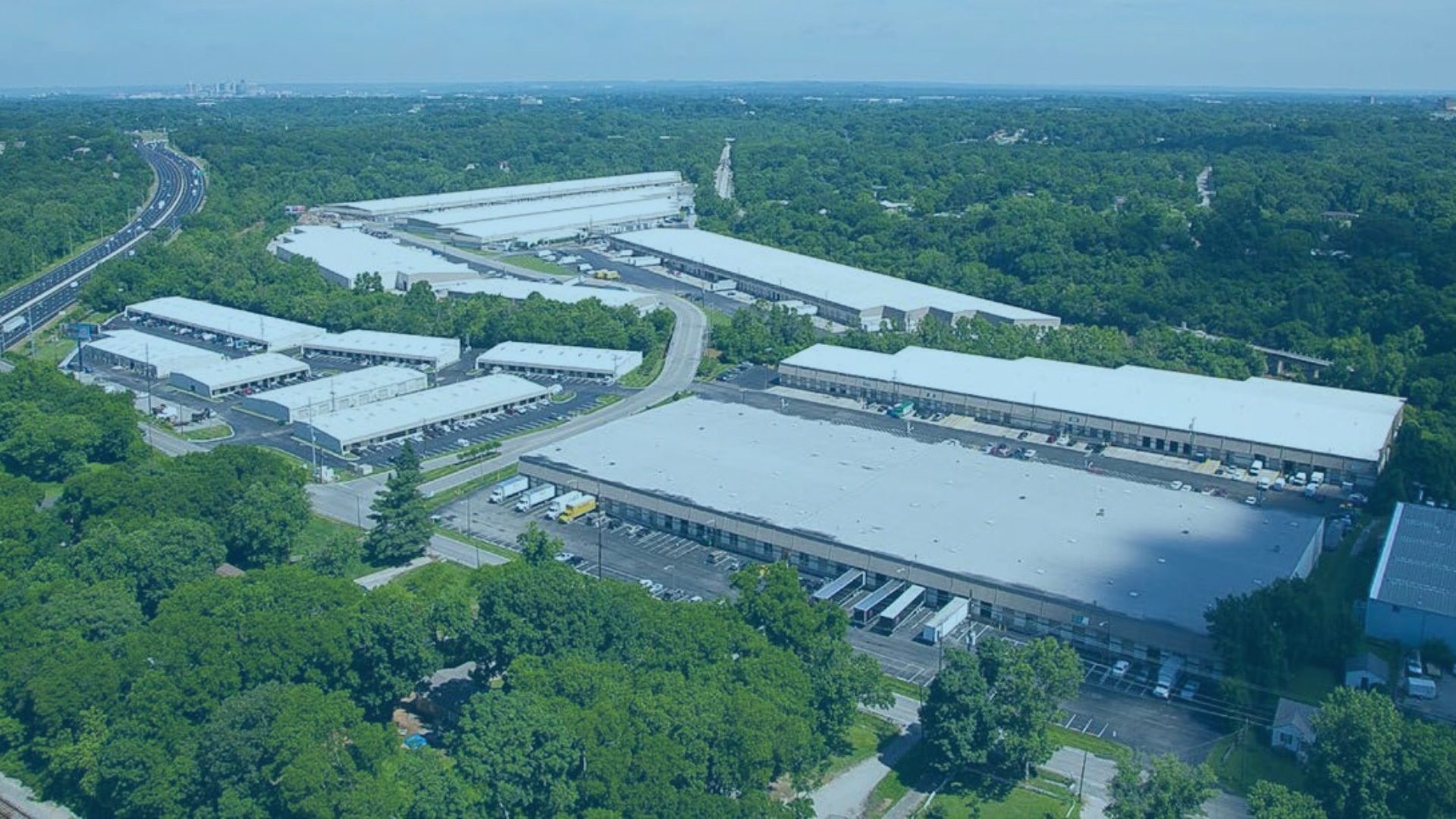How I Bought My First Office Building with $0 Out of Pocket
A Case Study for Buying Commercial Property with No Money Down
Commercial real estate offers an incredible wealth-building opportunity.
In fact, many of the world’s billionaires have diversified their investment portfolios with this asset class due to its relative stability, appreciation, and ability to leverage.
But it can be expensive.
Unlike stocks, bonds, and other investment vehicles, you can’t get started on Robinhood with pocket change - you’ll likely need tens (if not hundreds) of thousands of dollars.
And if you’re like me, waiting to accumulate that much cash just to get started seems like a waste of time and opportunity.
So, here’s a step by step guide to how I bought my first office building with no money out of my pocket so that you can do it, too.
First, My Background
I think it’s important that you understand where I’m coming from before we dive in.
Everyone has a different set of experiences, which can certainly change the outcome of this strategy based on how much knowledge you have in commercial real estate.
When I bought this building, I wasn’t quite a newcomer to the scene.
I Started Off As a Commercial Real Estate Broker
In 2013, I was recruited to work as the in-house leasing agent for a development firm in Nashville, TN.
This firm largely developed residential real estate, such as custom homes, townhome communities, and multifamily, but they also owned a portfolio of office, retail, and industrial real estate.
I cut my teeth working on these commercial buildings, which gave me some knowledge as to how these properties were leased, managed, and operated.
New investors, or those that desire to become one, ask me all the time - “What’s the best way to become a successful real estate investor?” and my answer is usually to start off as a broker so that you learn from the ground up.
However, that’s isn’t always the best option for everyone but it did work for me.
I had Developed Before, But Hadn’t Yet Invested
While I had experience as the “boots on the ground,” I really didn’t have the investment experience, which means underwriting opportunities and organizing the capital stack (your debt and equity).
I did, however, develop a 42-unit townhome project and was involved in every aspect of pulling that deal together.
So, I didn’t quite have that investment experience but understood generally how to put a deal together, work with equity partners, place the debt with my lenders, and operate a project.
But Do You Need That Experience?
Absolutely not.
I genuinely believe that as long as you start smaller and have a couple of partners that believe in you, you can takedown your first project without spending years building experience with someone else.
Does it help? Certainly.
But it won’t preclude your success.
Finding the Investment Opportunity
Finding a deal worth investing in can be the most frustrating piece of the process.
Especially if you’re in a hot market where it seems like prices keep going up inexplicably or projects are changing hands off-market.
Here’s how I found that first building.
A Client Found the Deal
A residential Realtor referred me a client that was interested in finding an owner-occupied building where they could operate a tech company.
When I spoke with this client, they already had a building in mind.
And, it was on the market - go figure!
It was in a part of town called Old Hickory Village about 15 minutes from downtown Nashville and I was certainly not familiar with the area prior to meeting this group.
1100 Old Hickory had been listed for sale for quite some time, so we figured we could knock the price down quite a bit.
The seller was asking $750,000 for the site and we were able to negotiate it down to $575,000.
But Financing Fell Through…
Shortly after my client put the building under contract, their financing fell through.
They had been working with an equity partner out of California, who didn’t see the vision for their business in this location.
When my client notified me that his partner wasn’t interested in the site and they were going to terminate the contract, I asked them to give me some time to find another buyer to which we could assign the contract.
Considering the terms we had negotiated, it was an attractive offer, and I quickly found another investor looking to purchase it.
And then it Fell Through Again.
An almost identical scenario happened with the second buyer.
His financing fell through and he wasn’t able to put it together fast enough to pull the deal off. Again, not wanting to lose the deal, I asked him to assign it to me.
At this point, I had started to like the neighborhood.
I saw the potential for this building as a long-term investment and didn’t want to let that slip through my fingers, not to mention the fact that we had negotiated the price down so far that it was basically a steal.
So, I took it and ran.
Why I Liked the Office Building
I had been working on this project for several months now with two different clients.
After performing inspections, touring the market, meeting with the neighborhood, and realizing the potential this site had, I just couldn’t let it go.
It’s easy to get emotional about your first purchase, but it’s crucial that you keep it objective and truly understand what makes the investment a good deal.
Here’s what I thought about it:
The Neighborhood Is Emerging
Nashville has expanded quite extensively since 2010.
With announcements from Amazon, Alliance Bernstein, Ernst & Young, and so many more, it’s no surprise that this once small city rapidly hit capacity, driving buyers from established neighborhoods to new pockets that had previously been ignored.
Though I had driven through Old Hickory once before with my grandfather, I knew nothing about neighborhood before placing the building under contract.
The Village is a small pocket located just off a major thoroughfare and near one of the largest lakes in Nashville with hundreds of new construction residential units underway - a sure sign that more commercial space will be needed to serve that community.
There Is Limited Commercial Space in This Pocket
Old Hickory Village sits about 15 to 20 minutes outside of downtown Nashville, depending on traffic, and was an old factory town built around the DuPont manufacturing facility in the early 20th century.
As such, it was very intentionally developed with residential streets in a grid-pattern surrounding a small commercial core.
I love pockets like this one because there is a limited amount of space that may be occupied by commercial real estate, lowering your building supply and increasing the demand by businesses.
Being one of the few commercial buildings in a pocket was a no-brainer for me.
It’s A Prominent Building in the Village
Not only is it one of the few commercial properties in the area, but it’s located on a prominent corner where much of the neighborhood traffic must drive past.
While the traffic flow may never reach excessive numbers, it’s still the most trafficked corner in the neighborhood, which brings a number of eyes and potential customers for any tenant that occupies the space.
The building also sits next door to the community center and across the street from the post office, two other major drivers of traffic.
I Could Also Buy It Below Replacement Costs
The building is 5,921 square feet, so at a purchase price of $575,000, that puts my cost per square foot at $97.11.
I couldn’t build the building back for $130 PSF, let alone purchase the dirt.
Now, that doesn’t necessarily mean that every opportunity that you find at below replacement costs will make a good investment.
When I see a deal like this, I use a quick back of napkin number to determine if the rent rates will work. Before even underwriting the deal, I’ll throw it in at an 8% cap rate to see if the for-rent numbers would work:
0.08 cap rate x $97.11 PSF = $7.77 PSF in rent
Now, that $7.77 PSF rent is a NNN number, meaning the tenant will be responsible for any and all costs involved in the property so it’s a net number to me.
In this case, I knew that I could certainly rent the building for more than that, so it was worth exploring.
How I Underwrote the Project
Underwriting is probably the most crucial piece of investing in commercial real estate.
Remember - you do NOT want to get emotionally attached to any of these opportunities and investing in commercial properties can be very black and white, if you’re disciplined.
Either the numbers work, or they don’t.
There are certainly times where you can make exceptions to this rule, but you’re going to be making more of a strategic bet, which isn’t as secure if you’re operating based on the numbers.
Here’s how I underwrote the office building.
I Wasn’t Sophisticated, Yet
I didn’t have any spreadsheets that I utilized to underwrite this project.
In fact, I really wouldn’t have those for another few months after I put the project under contract (and they do help immensely).
So, how did I put the numbers together on this project?
Well, I used my HP10bII+, which is one of my essential real estate tools, to run the debt service to calculate how much I would be paying each month.
The loan ended up being $575,000 because we took out an additional $120,000 in a construction line just in case we needed to make any tenant improvements.
Here’s what that calculation looked like:
$575,000 on a 20-year amortization with 5.25% interest = $3,874.60 monthly payment
In order for my investors and I to make an 8% return on our money in the first year, we had to rent the building for $9.47 per square foot on a NNN basis. With market rents in the area well above that, I knew we could make it happen.
Now, I use Spreadsheets and In-Depth Calculations
Utilizing spreadsheets makes the process far simpler.
They allow me to take into account variations on the rent rate, vacancy, debt, and so much more without having to fully pencil out the equations.
I use the same spreadsheet for just about every project now and will modify it slightly, if I need to, depending on the deal.
You can throw your own together in excel, as well, if you like.
These spreadsheets make your underwriting for projects much faster and more accurate than you could likely do on your own.
If you’d like to buy the spreadsheet that I use, contact me here.
So, Being Sophisticated Isn’t Absolutely Necessary
I was able to raise the capital for this project based off what I thought we could get in rents to make it work and not off of an in-depth underwriting script.
If you know what to look for in these deals and how to pitch the vision, that can work just as well.
Now, one thing to keep in mind, though - I wasn’t raising $5 million for an apartment syndication. This investment was relatively simple, which meant I could take it to individuals that knew me well and would be willing to “bet on the jockey.”
Putting Together The Capital Structure (The Capital Stack)
Raising equity and negotiating for the debt on an investment is a relatively straightforward process.
Especially if you’re starting small.
However, I think most individuals overthink this aspect of the project and therefore overcomplicate the process.
Here’s how I put together the capital stack.
I Didn’t Have Any Money
Which is the whole point of this article!
If I’d had enough money to take this project down on my own, we wouldn’t be here and you wouldn’t be reading through this post.
So, since I didn’t have enough money to do the project on my own, I knew I would have to bring investors to the table to help me take take it down.
When you’re short on cash, it’s important that you do highlight and magnify the attributes that you do bring to the table so that your investors not only like and trust you, but see the value in investing with you.
But I did Have Track Record
Having a track record is critical when doing commercial real estate deals.
Investors like to place their hard-earned dollars with operators that have “been there and done that,” so that they can have a bit of confidence with whom they’re partnering.
Now, I didn’t have a track record of successful commercial real estate investments, because this project was truly my first, but I did have a successful track record when it came to buying, selling, and operating commercial properties.
If you don’t have a history of doing exactly the type of project you’re putting together, harp on the pieces that can help you, even if they’re only related.
After all, everyone has to start somewhere.
If necessary, don’t be hesitant to bring in an expert mentor to guide you through the process. You can give them a portion of the deal, pay them for their expertise, or maybe they’ll help you just because they know and like you.
You don’t necessarily have to have the track record if your team does.
I brought in Equity Investors
My investors had both known me for a couple of years, so I didn’t have to pitch them on who I was or why they should invest with me.
They both knew that I had been working in the commercial real estate industry for 5 years at this point and had seen some of the projects that I’d worked on.
Since the capital raise was so low ($50,000 each for two investors) and they both saw the vision I had laid out for this neighborhood and the project, I had almost no obstacles standing in my way to settle the deal.
I highly recommend starting off with a smaller project so that your first equity raise is attainable.
My Partner called His Local Lending Relationship
One of the partners that I brought into the deal had far more investing experience than I did, at the time.
He called a local lender that he had worked with previously, who was interested in working with us on this deal.
One important thing to keep in mind when dealing with lenders is that they are essentially another partner in your project. They are often writing the largest check for the investment, so it’s important that you pitch to and treat them like a partner.
The lender was able to get us a term sheet based on the numbers we needed to see and we were able to wrap up the debt without having to shop it around.
How I structured The Partnership with The Investors
I’m asked more about how I structure the partnership with my equity partners than just about any other aspect of investing in commercial real estate.
And, to add to the confusion, there are so many different ways that you can set up your agreement.
Since you sourced the deal and are likely going to operate it, there are any number of fees and fee structures that you could utilize that work for both you and the investors.
But here’s how I set up this deal:
I Took A Portion of Equity Off the Top
Since I found the deal and I was going to be the one to manage the asset, I decided that I was going to take a portion of the equity off the top for doing so.
This practice is very common among commercial real estate investments - the group or entity that finds the deal and decides to put the time and energy into making it happen gets rewarded with a portion of the equity.
For this deal, I negotiated for a portion of the equity that would be granted half upon acquisition and the other half after the building was leased.
This incentive kept me focused on the property and making the investment work for everyone.
But I also Rolled in My Commission
I could have just accepted that piece of equity, but I wanted a larger chunk of the project for myself. So, I rolled my commissions on acquisition into the partnership.
My 3% commission because 15% of the down payment:
20% down payment / 3% commission on total purchase = 15%
Not only did placing that extra capital into the deal help me with my balance sheet, it also gave my investors peace of mind that I was fully committed to this deal.
That commission was already baked into the deal and cost me nothing out of pocket, so I figured “why not invest it?” anyway.
If you have your real estate license (or are considering getting it), this method is great for taking advantage of the commissions that sellers are already anticipating to pay.
Taking Over Operations of the Site
If you want to maximize the amount of equity you will retain in a deal like this one, you’ll need to prove that you can operate the asset as the manager.
That doesn’t necessarily mean YOU need to be out there everyday changing light bulbs and mowing the lawn, but it will be your responsibility to make sure that those actions are taking place and at an effective cost to the property.
With this being my first investment, I didn’t want to mess it up.
I Brought in A Property Management Company
If you want to make yourself look like a solid asset manager from the start, hire an outstanding property management company.
A strong property manager will oversee the day to day operations on your behalf to ensure that the project comes in on budget and that every necessary item, including preventative maintenance, is taking place.
Fortunately, I am a partner in a property management company (Parasol Management), so I brought my partners in to help me manage this site.
Yes - even though it was my asset, I still hired “3rd party” management to oversee the day to day because my time is more efficiently spent elsewhere.
Be sure to get with your manager at the end of each year to set annual budgets.
Finding a Tenant
My brokerage, The Cauble Group, handled the lease up of the building.
If you’re not a broker, aren’t interested in leasing your own property, or simply don’t know where to get started, I highly recommend that you bring in a high quality local firm to assist with the lease up.
The longer your property is vacant, the worse the investment becomes, and it’s tough to catch up for all of that lost time.
The fees that commercial real estate brokers charge will pale in comparison to that lost rent, so it’s certainly worth it. They will also help vet each incoming tenant to ensure that you are getting the highest quality prospects possible.
I also reached out to the neighborhood, in this case, to see what they wanted and got a number of great ideas, which helped us target the type of tenant we wanted in the space.
My Long-Term Vision for the Site
When buying a property, it’s important to think about your short and long-term plan.
Your investors may help you decide that strategy, too. If they want their capital placed for a while to take advantage of appreciation, you’re probably going to be locked in.
Be sure to bring that up on the front end with your investors because the last thing you want to be doing is arguing with them about when or if you should sell.
I’m Likely Going to Refinance The Building Soon
I’m planning on refinancing this project in the near term.
The partner that brought this bank into the deal doesn’t work with them anymore and they’re disappointingly unresponsive and unwilling to work with us, despite having an agreement.
Considering the fact that rates are low right now and I have a number of better local lending relationships, I’ll refinance the project to pay off our current loan and move on.
You want to constantly be reviewing your loan documents to monitor when (or if) you should start the search for a refi.
I’d Prefer to Hold the Building
With this building being in an up and coming neighborhood only 15 minutes outside of downtown, I’d like to hold it for the long-term to take advantage of the appreciation that will come this way.
My plan is also to buy and hold as much real estate in the Nashville area as I possibly can.
The great thing about commercial real estate is that this tenant will be occupying the space for the next 5 years paying rent, meaning I don’t have to worry about what we’ll do with the site for quite some time.
But As a Commercial Real Estate Investor, You Should Always Consider Selling
If an opportunity comes along that you should take, there’s no reason to be stubborn and not let go of a property to free up that cash simply because you don’t want to sell.
While I prefer to hold all of my assets, I have sold of some (strategically, of course) because they allowed me to roll money into an even better deal or into a better location for where I’m working.
You never know when the right time will be to sell, so it’s always best to prepare for one, no matter what.
About The Author:
Tyler Cauble, Founder & President of The Cauble Group, is a commercial real estate broker and investor based in East Nashville. He’s the best selling author of Open for Business: The Insider’s Guide to Leasing Commercial Real Estate and has focused his career on serving commercial real estate investors as a board member for the Real Estate Investors of Nashville.



















If you're serious about real estate investing, it's time to look beyond those quaint single-family homes.
Bold statement? Absolutely. But stick with me here.
Now, don't get me wrong. Investing in a single-family home beats twiddling your thumbs on the sidelines of the real estate game. And yes, I'll even go out on a limb and say that residential real estate still outshines many other investment vehicles out there.
But that's not why we're here today, is it?
I'm about to lay out five reasons why commercial real estate should be your go-to play.